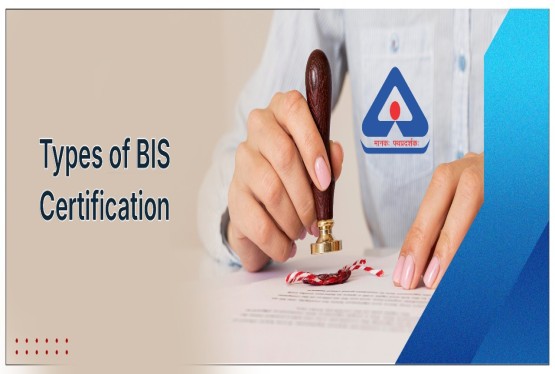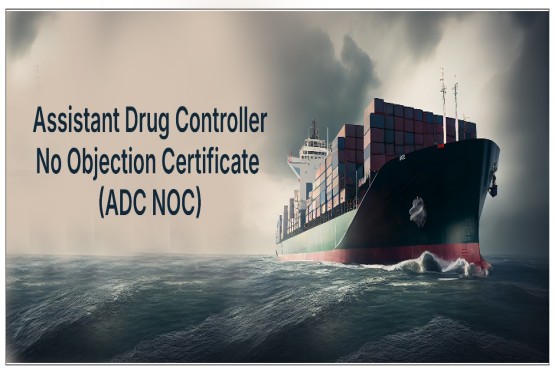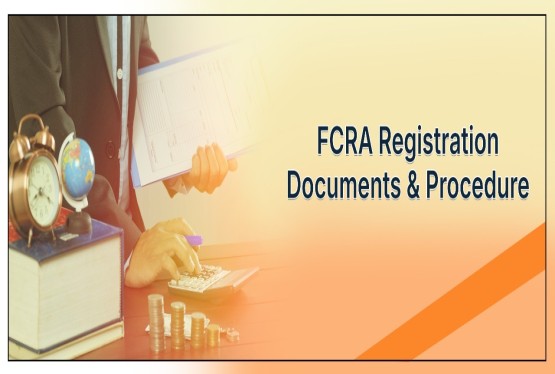India’s export regulations are closely governed to ensure that sensitive and dual-use goods do not fall into the wrong hands. One of the important aspects of export regulation is the SCOMET license, required for specific items listed under the SCOMET list. SCOMET stands for Special Chemicals, Organisms, Materials, Equipment and Technologies—items that can be used for both civilian and military applications. Hence, they are placed under export control by the Indian government. This article explains the various product categories under the SCOMET list, the benefits of a SCOMET license, the eligibility criteria, required documents, licensing authorities, the step-by-step procedure for obtaining the license, its validity, and penalties for non-compliance.
What is a SCOMET License?
The SCOMET license is a special permission granted by the Government of India for the export of dual-use items listed under Appendix 3 of Schedule 2 of ITC (HS) Classification. These items are sensitive in nature and may pose a threat to national and international security if not regulated properly. Exporters must obtain this license from the Directorate General of Foreign Trade (DGFT) or other competent authorities based on the category of the product.
Categories of Products under the SCOMET List
There are nine product categories in the SCOMET list. Each category covers a specific type of item and is assigned to the appropriate licensing authority.
Category 0: Nuclear Materials and Technology
This includes nuclear material, nuclear equipment, and related technology. Items listed under this category are highly sensitive and are licensed by the Department of Atomic Energy (DAE).
Category 1: Toxic Chemical Agents and Chemicals
This category includes chemicals that can be used for the production of chemical weapons. The licensing authority for this category is the DGFT.
Category 2: Microorganisms and Toxins
This includes biological agents and toxins that can be used for biological warfare. The DGFT grants the license for items under this category.
Category 3: Material and Material Processing Equipment
This category includes special materials, related technologies, and equipment used in manufacturing sensitive items. Licenses are issued by the DGFT.
Category 4: Nuclear-Related Equipment (Other Than Category 0)
This includes nuclear production or test equipment not covered in Category 0. The DGFT handles licensing for these items.
Category 5: Aerospace Systems and Components
This category includes aerospace systems, test and production equipment, and specially designed components. It falls under the purview of the DGFT.
Category 6: Munitions List
This includes items specifically designed for military use, such as arms and ammunition. The Department of Defence Production (DDP) is responsible for licensing.
Category 7: Reserved
Currently, this category is reserved and does not include any items for licensing.
Category 8: Advanced Technology Equipment
Items under this category include electronics, computers, telecommunications, sensors, lasers, avionics, and marine navigation systems. The licensing authority for these is the DGFT.
Licensing Authorities for SCOMET Exports
The SCOMET license is issued by three primary authorities based on the item’s classification:
1. Directorate General of Foreign Trade (DGFT) – Issues licenses for Categories 1, 2, 3, 4, 5, 7, and 8.
2. Department of Atomic Energy (DAE) – Issues licenses for Category 0.
3. Department of Defence Production (DDP) – Issues licenses for Category 6.
Benefits of Obtaining a SCOMET License
Obtaining a SCOMET license ensures legal compliance and brings several business and strategic benefits:
1. Enhanced Global Trust
Complying with international export control norms enhances India’s credibility in the global trade community, especially in sensitive and high-tech sectors.
2. Access to Strategic Markets
Many high-value and strategic markets require exporters to meet strict regulatory standards. A valid SCOMET license opens the doors to such markets.
3. Participation in Global Supply Chains
Global companies prefer to work with suppliers who are compliant with export controls. With a SCOMET license, Indian exporters can become part of global supply chains involving sensitive technologies.
4. Avoidance of Legal Action
Exporting SCOMET items without a valid license is a punishable offense. With proper authorization, exporters avoid severe penalties, including imprisonment and suspension of their Import Export Code (IEC).
Eligibility Criteria for SCOMET License
To apply for a SCOMET license, the exporter must fulfill the following basic conditions:
• Must possess a valid Importer Exporter Code (IEC).
• Must be registered with the DGFT portal.
• Must have details of the end-user and the intended usage of the product.
• Should not be involved in any prohibited activity or be blacklisted by any authority.
Documents Required for SCOMET License Application
The exporter must submit the following documents along with the application:
1. IEC Certificate
2. Covering Letter addressed to DGFT
3. Purchase Order or Export Contract with the overseas buyer
4. Technical Specifications of the product
5. End-Use and End-User Certificate (EUC) from the buyer
6. Company Profile and export experience (if applicable)
7. Product Datasheet or Brochure
8. Copy of PAN Card
9. List of Directors/Partners
10. Board Resolution/Power of Attorney in case of authorized representative
Additional documents may be required based on the product category and destination country.
Procedure to Apply for SCOMET License
The step-by-step procedure to apply for a SCOMET license is as follows:
Step 1: Register on the DGFT Portal
The exporter must be registered on the DGFT's online portal (https://www.dgft.gov.in). A valid IEC code is mandatory for registration.
Step 2: Prepare the Documentation
Collect all relevant documents including the end-user certificate, purchase order, technical specifications, and covering letter.
Step 3: File Online Application
Submit the online application using Form ANF-2E on the DGFT portal along with the necessary documents. The exporter must digitally sign the application.
Step 4: Scrutiny by DGFT
The application is scrutinized by the DGFT or other relevant authority. If required, the application may be forwarded to other government bodies such as the Ministry of Defence or Department of Atomic Energy.
Step 5: Clarifications (If Any)
The applicant may be asked to submit additional details or clarifications regarding the end-user, product specification, or end-use.
Step 6: Issuance of License
If the application is approved, the SCOMET license is issued electronically. The exporter can then proceed with the shipment of goods as per the license conditions.
Validity of SCOMET License
The SCOMET license is generally valid for a period of 24 months from the date of issue. If required, the license can be extended for an additional period of 6 months. The maximum extension allowed is up to 12 months through a revalidation request to the DGFT regional office, which must be approved by the DGFT headquarters.
Penalty for Export Without a SCOMET License
Exporting SCOMET items without a valid license is considered a serious violation under India’s Foreign Trade Policy and relevant export control laws. Penalties include:
• Suspension of IEC
• Imprisonment of at least 5 years, which can extend to life imprisonment
• Fine of INR 3 lakhs to INR 20 lakhs, or five times the value of the exported item, whichever is higher
Such violations can also lead to permanent blacklisting from exporting activities and damage to the exporter’s international reputation.
International Importance of SCOMET Regulations
SCOMET regulations are India’s contribution to the international non-proliferation efforts. They align with global control regimes such as:
• Wassenaar Arrangement
• Missile Technology Control Regime (MTCR)
• Australia Group
• Nuclear Suppliers Group (NSG)
By adhering to these norms, India ensures its sensitive goods are not used for the development of weapons of mass destruction or by terrorist organizations.
Conclusion
The SCOMET license plays an important role in ensuring that sensitive technologies and materials exported from India are properly regulated and used for legitimate purposes only. With the increasing role of India in global high-technology supply chains, adherence to export control norms through licenses like SCOMET strengthens national security and enhances India’s reputation as a responsible trade partner.
Exporters dealing in dual-use items must be well-informed about the categories, documentation, and procedures involved in obtaining a SCOMET license. Compliance with these norms is not just a legal requirement but a strategic move to enhance global competitiveness.
If you want to obtain SOMET License, then you can connect with us through mail at info@ccoffice.in or Call/Whatsapp at +91 9988424211.
FAQs
Q1. What is a SCOMET License and who needs it?
Ans. A SCOMET License is a special permission granted by the Directorate General of Foreign Trade (DGFT) or other authorized agencies for the export of sensitive and dual-use items listed in the SCOMET list. Any exporter dealing in Special Chemicals, Organisms, Materials, Equipment, and Technologies that have potential military or dual-use applications must obtain this license before export.
Q2. Where is the list of SCOMET items published?
Ans. The list of SCOMET items is published in Appendix 3 of Schedule 2 of the ITC (HS) Classification of Export and Import Items. It contains 9 categories of items that include nuclear materials, chemicals, microorganisms, aerospace systems, munitions, and high-tech equipment.
Q3. Which authority issues the SCOMET License in India?
Ans. The authority to issue SCOMET Licenses depends on the product category:
• DGFT issues licenses for Categories 1, 2, 3, 4, 5, 7, and 8.
• Department of Defence Production (DDP) issues licenses for Category 6 (munitions).
• Department of Atomic Energy (DAE) issues licenses for Category 0 (nuclear materials and technologies).
Q4. What is the validity of a SCOMET License?
Ans. A SCOMET License is valid for a period of 24 months from the date of issue. It can be extended for another 6 months, and the total extension allowed is up to 1 year through revalidation by the regional DGFT office, subject to approval by the DGFT headquarters.
Q5. What are the penalties for exporting SCOMET items without a license?
Ans. Exporting SCOMET items without a valid license is a serious offense. Penalties include:
• Suspension of Import Export Code (IEC)
• Imprisonment for at least 5 years, which may extend to life
• Monetary fine of INR 3 lakhs to INR 20 lakhs or 5 times the value of exported goods
Q6. What documents are required to apply for a SCOMET License?
Ans. Key documents required include:
• Import Export Code (IEC) Certificate
• End-Use and End-User Certificate (EUC)
• Purchase order or export contract
• Technical specifications and product datasheet
• Company profile and list of directors
• Power of Attorney or Board Resolution (if applicable)
Q7. How long does it take to get a SCOMET License?
Ans. The timeline to obtain a SCOMET license depends on the product and the category under which it falls. On average, it may take 4 to 6 weeks, but the process may extend if additional scrutiny or inter-ministerial consultation is required.
Q8. Is SCOMET compliance necessary for all countries?
Ans. Yes. SCOMET compliance is required regardless of the destination country. Even if the export is to a friendly or allied nation, if the product falls under the SCOMET list, a valid license is mandatory. The end-use and end-user must also be clearly declared to avoid misuse.












































































_crop10_thumb.jpg)







_Rules,_2025_learn_crop10_thumb.jpg)























































































_crop10_thumb.jpg)








 in BIS FMCS_learn_crop10_thumb.jpg)


